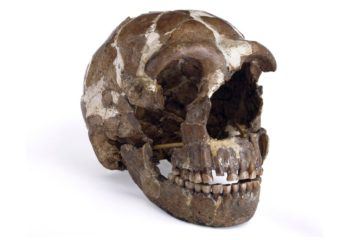Sabrina Imbler in The New York Times:
 If you were somehow able to travel back in time some 130,000 years and chance upon a Neanderthal, you might find yourself telling them about some of humanity’s greatest inventions, such as spanakopita and TikTok. The Neanderthal would have no idea what you were saying, much less talking about, but they might be able to hear you perfectly, picking up on the voiceless consonants “t,” “k” and “s” that appear in many modern human languages. A team of scientists has reconstructed the outer and middle ear of Neanderthals and concluded that they listened to the world much like we do. Their study, published Monday in Nature Ecology & Evolution, found that Neanderthals had the anatomical ability to perceive a similar range of sounds as modern Homo sapiens, including upper speech frequencies that mainly involve consonant production.
If you were somehow able to travel back in time some 130,000 years and chance upon a Neanderthal, you might find yourself telling them about some of humanity’s greatest inventions, such as spanakopita and TikTok. The Neanderthal would have no idea what you were saying, much less talking about, but they might be able to hear you perfectly, picking up on the voiceless consonants “t,” “k” and “s” that appear in many modern human languages. A team of scientists has reconstructed the outer and middle ear of Neanderthals and concluded that they listened to the world much like we do. Their study, published Monday in Nature Ecology & Evolution, found that Neanderthals had the anatomical ability to perceive a similar range of sounds as modern Homo sapiens, including upper speech frequencies that mainly involve consonant production.
The authors believe this research has implications beyond the ear. Any insight into how Neanderthals heard can offer new clues into one of the most-debated, unresolved questions about the ancient hominids: whether Neanderthals spoke. Hearing and speech are often coupled in the animal kingdom, according to Dan Dediu, a language scientist at the Lumière University Lyon 2 in France, who was not involved with the research. “It would be meaningless for an animal to produce a frequency that can’t be heard by conspecifics,” he said.
More here.
